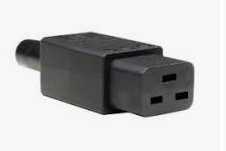Skeptics aren't limited just to the U.K. I agree with you, the concept of selling a $40 power strip for $600, at least on paper, sounds ludicrous -- outdone only by the even more ludicrous concept of selling a $5 mains cable for $250. At AXPONA, we were met with all sorts of skeptics with these treated cables. It turns out our problem was that our live A/B demonstrations were too good and that there was absolutely no logical way our treatment could have this level of impact. After hearing our demo, we were accused by a certain dealer (who was a competitor) of devious manipulation. Even our own partner, Lyngdorf, who loaned us two of their streaming amplifiers were left scratching their heads in disbelief. This level of skepticism isn't new for us and we are unable to help our cause since we can't share what this treatment is but those of you who have taken a chance and have dipped your toes into QSAL waters, what is validating is that the overwhelming majority have returned for more.
The concept of large gauge wire is a concept that is foreign to most parts of the world, especially if your mains is 220-240V simply because you don't have to pass as much current as we do here in the U.S. When I first introduced the concept of using large gauge wire to Anas, who is based in Belgium, he was not in favor and he said even Steven in Hong Kong was not a fan of large gauge. Generally, large gauge wire sounds slow and muddy and lacks finesse and so there are good reasons you don't see other manufacturers going this route but this highlights the unique path that we are on. While an Ultimatum mains cable at 0awg or speaker cables at 0000awg have no business sounding good, we believe these cables are the best there are in the world, no ifs, ands, or buts.
In the U.K., your situation is unique as you utilize a ring main circuit and I believe you are the only country in the world that utilize fuses in your mains cables and so you may not feel comfortable with our standard offerings. However, our Spectra mains cables are treated versions of cables manufactured for us by Mark Coles of Sablon Audio who is based in the U.K. His flagship mains cable, the Sablon King has been available for years and is a 5awg mains cable and so large gauge offerings do exist there. As for building a 0awg mains cable, yes, it was not easy to get this done. I'm fairly confident in stating there are no other cables in existence in the world today where you have 0awg wire terminated with a NEMA 5-15P plug on one end and a C15 or C19 IEC connector on the other end because it absolutely makes no sense and so the company that makes them for us had to design them from scratch. Theses cables are incredibly difficult and expensive to make which is why they cost what they do but we are confident that their performance is unmatched in the industry.
Regarding your comment about manufacturers or resellers like MCRU getting their lawyers on us if we resold treated versions of their products, this is why we are careful about what we choose to treat and why we prefer a mutual collaboration with companies where they are willing participants in our venture. That is certainly the case with Monoprice, Blue Jeans Cable, Iconoclast, and Sablon Audio. For basic items like this $40 power strip, we're fairly certain Southwire will be happy to sell us as many as we would like to buy during this exploratory phase and should we decide to permanently include this product in our catalog, we would certainly approach them about a partnership as we would prefer to offer input regarding a more optimized design. For now, during our R&D of this product, we have found it to be well-built utilizing adequate gauge wire for its purposes and is cULus certified meaning it has met UL safety standards for both the U.S. and Canada.



